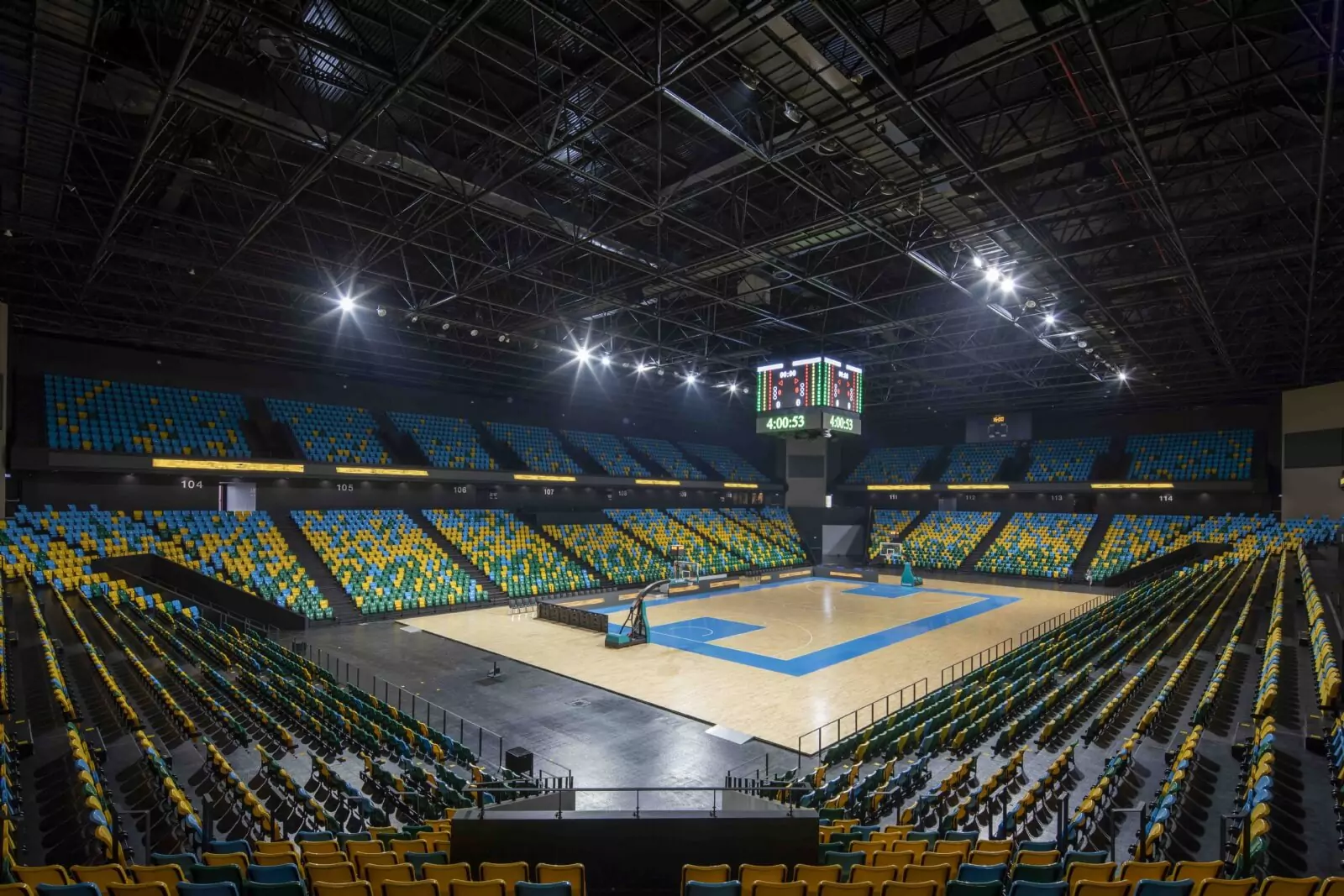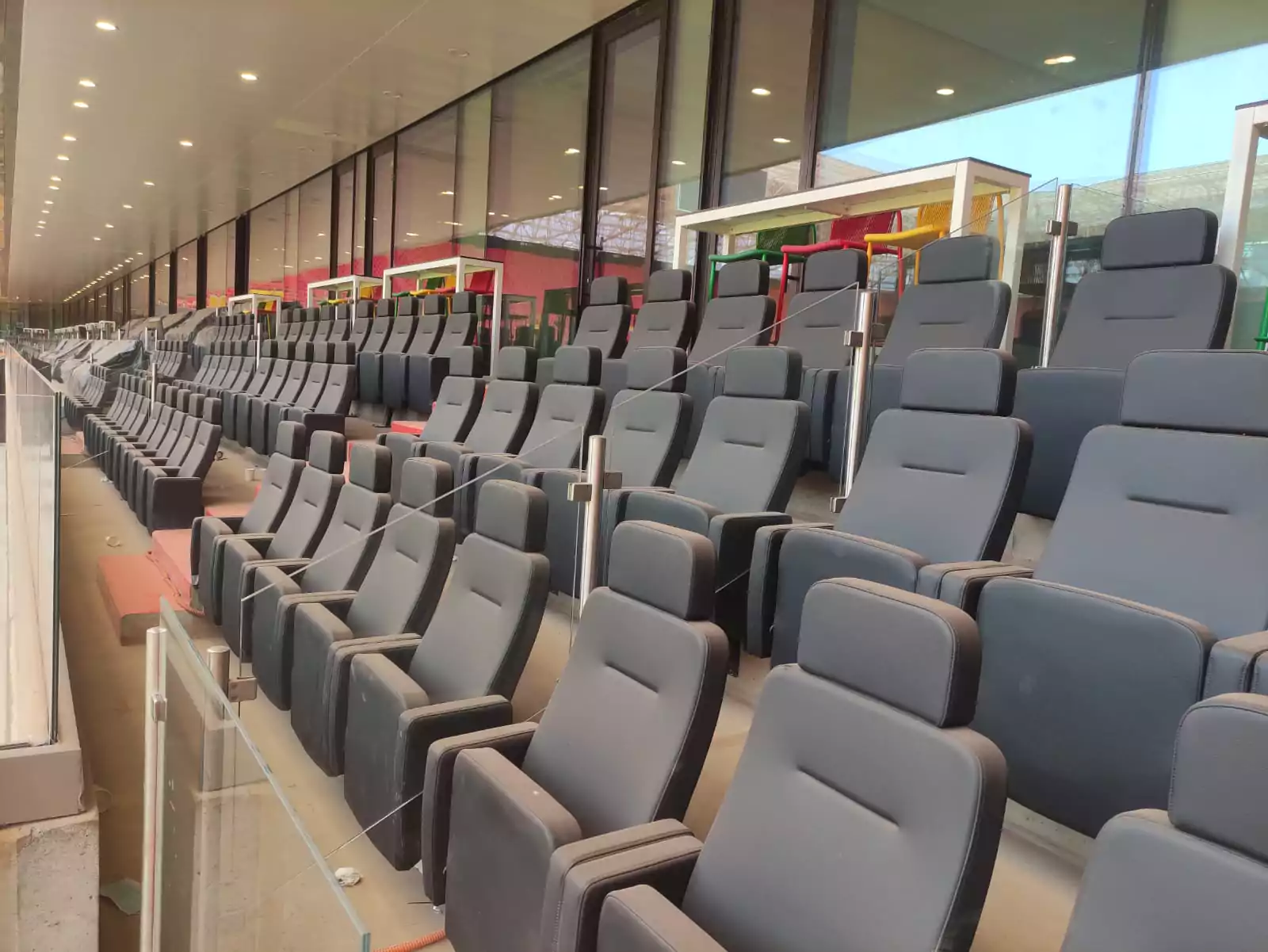Perfect Stadium Seat
The Ultimate Guide to Choosing the Perfect Stadium Seat for Large Venues
When it comes to creating the ultimate experience in large venues like sports stadiums, arenas, and outdoor concert venues, one of the most important elements to consider is seating. Stadium seats are more than just a place to sit; they play a crucial role in determining how comfortable, engaged, and satisfied the audience will be during long events. Whether you’re building a new stadium or upgrading an existing one, choosing the right stadium seating is essential to ensuring that every attendee has a positive experience.
In this guide, we’ll explore the key factors that go into choosing the best stadium seat for your venue, focusing on comfort, durability, safety, and the latest trends in stadium seating design.

Why Stadium Seats Matter for Venue Success
Stadium seats directly influence the spectator experience. Fans at sporting events or attendees at concerts expect to be comfortable, even if they’re seated for hours. A well-designed stadium seat provides ergonomic support, allowing attendees to enjoy the event without discomfort. Beyond comfort, stadium seating must be designed for durability, safety, and flexibility, ensuring that the venue can accommodate a large number of spectators over many years of use.
Investing in high-quality stadium seats not only improves audience satisfaction but also increases the overall reputation of the venue, making it a go-to destination for future events. Poor seating, on the other hand, can lead to negative reviews, discomfort, and even safety concerns.
Key Factors to Consider When Choosing Stadium Seats
When selecting stadium seats, there are several important factors to keep in mind to ensure you’re making the right investment for your venue. Here are the key elements to focus on:
1. Comfort and Ergonomics
One of the most critical factors in stadium seating is comfort. Fans are often seated for extended periods, especially during long sporting events, concerts, or performances. Seats that are uncomfortable or lack support can leave attendees frustrated and distracted from the event.
- Ergonomic Design: Stadium seats should provide proper back support and cushioning to prevent discomfort. Ergonomic designs that follow the natural curve of the body help reduce strain and allow fans to enjoy the event.
- High-Density Foam Padding: Seats with high-density foam offer long-lasting comfort without losing their shape over time, ensuring that even after hours of sitting, the seat remains comfortable.
- Reclining or Flexible Seating Options: In some cases, premium sections of the stadium may benefit from reclining seats that allow fans to adjust their seating position for maximum comfort.
2. Durability and Weather Resistance
Stadium seats are exposed to heavy use, particularly in high-traffic venues like sports arenas and concert halls. Additionally, outdoor stadiums must deal with changing weather conditions, so it’s essential that the seating is built to withstand harsh elements such as rain, sun, and wind.
- UV-Resistant Materials: For outdoor stadiums, UV-resistant seating prevents fading and degradation caused by prolonged exposure to sunlight.
- Weatherproofing: Stadium seats made with weatherproof materials resist corrosion and damage from moisture, ensuring that the seating remains in top condition, even in wet or humid environments.
- Sturdy Frames: High-quality materials such as reinforced plastic or metal frames provide durability and stability, preventing the seats from becoming loose or wobbly over time.
3. Safety Standards
Safety is a top priority in any large venue, and stadium seats must meet strict safety regulations to ensure the well-being of all attendees. This includes using flame-retardant materials and complying with local fire safety codes.
- Flame-Retardant Upholstery: Using flame-retardant fabrics and padding reduces the risk of fire hazards, especially in enclosed stadiums or venues with a large number of people.
- Secure Installation: Stadium seats should be securely installed to avoid accidents or injuries during events. Properly bolted or anchored seats prevent tipping or collapsing under the weight of spectators.
4. Space Efficiency
Stadiums must accommodate thousands of spectators, making space efficiency a key consideration. Seats need to be designed to fit closely together without sacrificing comfort, maximizing the number of attendees while ensuring everyone has enough room to sit comfortably.
- Foldable Seats: Many stadium seats are designed to fold up when not in use, allowing for easy cleaning and maintenance between events. This also creates more space for people to walk between rows.
- Stackable or Removable Options: For multi-purpose venues, stackable or removable seating can offer flexibility, allowing the venue to reconfigure the space for different types of events.
The Latest Trends in Stadium Seating
In recent years, stadium seating has evolved to incorporate new materials, designs, and technology aimed at improving the spectator experience. Here are a few trends that are shaping the future of stadium seats:
1. Sustainable Stadium Seating
As sustainability becomes a global priority, more venues are opting for environmentally friendly seating options. Manufacturers are now producing stadium seats made from recycled materials or eco-friendly composites. These seats offer the same durability and comfort as traditional options but with a reduced environmental impact.
- Recycled Materials: Stadium seats made from recycled plastic or other sustainable materials help reduce waste and support green building initiatives.
- Eco-Friendly Upholstery: Using natural or recycled fabrics for seat cushions and backs not only improves sustainability but also adds a unique aesthetic to the venue.
2. Technology Integration
Modern stadiums are integrating technology into their seating to provide a more interactive and convenient experience for fans. From built-in charging ports to Wi-Fi connectivity, stadium seats are becoming more than just a place to sit.
- Charging Ports and USB Outlets: Offering built-in charging options for fans to keep their devices powered during long events.
- Interactive Seating: Some stadiums are experimenting with seats that offer touchscreens for ordering food, watching replays, or even accessing real-time stats during sporting events.
3. Premium Seating Sections
Many stadiums are now offering VIP seating sections with added amenities such as extra cushioning, wider seats, and private access. These seats cater to fans who are willing to pay more for a luxurious and exclusive experience.
- Reclining Stadium Seats: For VIP sections, reclining seats with footrests and extra padding are becoming increasingly popular.
- Private Viewing Boxes: Some venues are including private boxes or suites where attendees can enjoy the event in comfort and style, complete with plush seating and personal service.
Maximizing Comfort and Capacity in Stadiums
For large venues, balancing comfort and capacity is a challenge. Stadium operators need to maximize the number of seats without compromising on comfort. Here’s how to achieve the best of both worlds:
- Slim-Profile Seats: Seats with a slim profile take up less space, allowing more people to fit in each row while still providing adequate comfort.
- Modular Seating Systems: Modular seating systems can be customized to fit the layout of the stadium, providing a flexible solution for seating arrangements.
- Ergonomic Design in Tight Spaces: Even with limited space, ergonomic design ensures that spectators remain comfortable for the duration of the event, minimizing the risk of discomfort or strain.
Why High-Quality Stadium Seats Are Worth the Investment
Investing in premium stadium seating offers numerous benefits that go beyond just comfort. High-quality seats are designed to last for years, providing durability and reliability even in high-traffic venues. This reduces maintenance costs and ensures that the venue remains in top condition for longer.
Additionally, stadium seats that offer comfort and modern amenities like charging ports or VIP options can attract more visitors, enhance the fan experience, and create a positive reputation for the venue. In the long run, investing in high-quality seating can lead to increased ticket sales, repeat customers, and a stronger overall brand for the venue.

Elevate Your Venue with the Right Stadium Seats
Choosing the right stadium seat is essential for creating a comfortable, safe, and enjoyable experience for spectators. From ergonomic designs to weather-resistant materials and integrated technology, the right seating can make all the difference in how attendees perceive your venue.
By investing in high-quality, durable, and comfortable seating, stadium operators can ensure that their venue remains a top choice for sports fans, concert-goers, and event organizers. Whether you’re outfitting a new stadium or upgrading an existing one, choosing the right stadium seating solution will enhance both the spectator experience and the long-term success of the venue.

